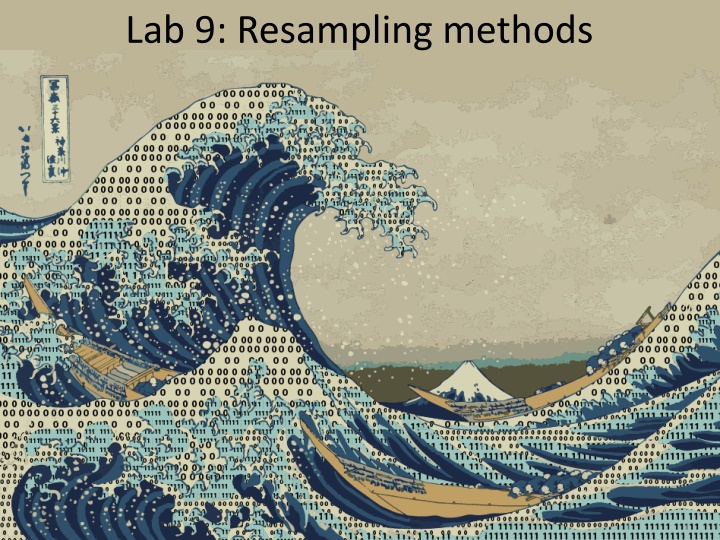
Understanding Resampling Methods in Statistics
Explore the concept of bootstrap resampling method and permutation tests in statistics, which are valuable tools for estimating sample means, testing hypotheses, and dealing with limited data or non-normal distributions. Discover how these methods work, their use cases, assumptions, drawbacks, and application in example scenarios.
Download Presentation

Please find below an Image/Link to download the presentation.
The content on the website is provided AS IS for your information and personal use only. It may not be sold, licensed, or shared on other websites without obtaining consent from the author. If you encounter any issues during the download, it is possible that the publisher has removed the file from their server.
You are allowed to download the files provided on this website for personal or commercial use, subject to the condition that they are used lawfully. All files are the property of their respective owners.
The content on the website is provided AS IS for your information and personal use only. It may not be sold, licensed, or shared on other websites without obtaining consent from the author.
E N D
Presentation Transcript
Enter the bootstrap Bradley Efron The computer
The procedure is quite straightforward To obtain a sense of how stable a sample mean is (how it distributes). Simply *resample* (with replacement!) from the existing sample. Do this n times (10k 100k 1m) Calculate the standard deviation of these resampled means. Compare with the figure of interest.
Bootstrap logic 3575 3537 777 7 357 7 ?
Use cases When there is only limited data (controversial) When the underlying distribution is not normal and/or not known When estimating sample means of rare events
Bootstrap drawback/assumption This works if and only if the sample truly is representative of the population. In other words, if something didn t happen in the sample, it can t ever happen. The data we have is the only data that can ever be So small samples necessarily over- or underestimate the probability of rare events.
It seems like a miracle But it works (usually)!
Permutation tests Classical tests (e.g. t-test) assume that the data is distributed in a certain way. If the distribution of the data is not what is assumed, the reported p-value by the test is not the real p-value (!) Permutation tests use the actual data to estimate how likely a given result is. Logic: We pretend we lost the labels (which group data came from), then create a null distribution (by random arrangement of groups) and compare with empirical result.
Example A rat is stressed out for 2 weeks 10 neurons are then taken out 5 we treat with Ketamine and 5 we don't treat at all We then count the number of dendritic spines of each neuron Hypothesis: Ketamine works by growing dendritic spines K = [117 123 111 101 121] C = [98 104 106 92 88] Test statistic: sum(K) sum(C) We can now calculate exact p-value by determining the null distribution through resampling methods.
